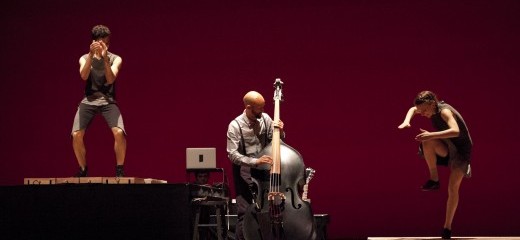
Little Explosions with Dorrance Dance
by Ellen Chenoweth and Lisa Kraus
On the day that we went to see Dorrance Dance, there was a story on the radio about a 95-year-old Philadelphia jazz drummer, Charlie Rice, preparing for his last performance. He had started as a tap dancer, performing at the old Lincoln Theater at Broad and Lombard, before morphing into a jazz drummer. Dorrance calls herself a dancer and a musician, with tap encompassing both art forms, so it was a nice reminder of the congruity.
The first half of the concert had no music other than what the dancers made on their own, with their breath, their shoes, or thick metal chains. It was surprising then to find ourselves writing words like “soft” and “subtle,” a sensation of gentle rain somehow not what you might expect.
Dorrance understands how to help us see how each sound is made. The first piece, SOUNDspace, opens with a series of groups, threes or fours, lining up facing the audience to deliver simple repeating actions in unison—the right foot taps turn out then in, four knees swing sideways then back to parallel. It’s satisfying how single actions fire off into other ones, popping here, zooming there, a continuous series of little explosions.
Clapping, tapping, slapping available surfaces, the dancers amplify in different ways how physical action produces sound. The sound of one kind of shoe—with aluminum tap —is a neat thwack. Another shoe—leather-soled—is swishier, softer. Sliding on the shoes makes a crossing-stage whoosh. Leaning back in the heel pounds out bass. Slapping forward on the foot, or on the side, modulates the pitch.
We talk about phrases in writing, in music, and in dance; but for some, it’s rare to notice a phrase as such when watching a dance performance. With Dorrance Dance, there was no escaping it. A dancer performed a phrase and the taps were as clear as any words—word-taps forming into phrases, or sentences, or exclamations, or exhortations.
There’s the sense here, too, of getting to know the dancers as individuals, appreciating them on their own terms. There’s nothing cookie cutter about them. Warren Craft, for one, is gangly and looks possessed. The tap demon wiggles its way out of him in rapid rat-a-tats. There are a variety of bodies on stage, a variety of sizes, seemingly costumed accordingly to individual preference. Hearing in the post-show discussion that all of the solos were improvised, this sense is confirmed.
Dorrance herself slips and slides, her upper body a little wavery on top of long, long legs. Sometimes there’s a slapstick “whoa, Nelly!” feel, with all her parts catching up to each other just in time for a quick “whew!” and on to the next tapping adventure. We’re conscious of her as the evening’s lodestar and, with so much publicity and attention recently poured her way, it’s impressive how graciously she addresses the MacArthur issue in the post-show chat (she just got one), deflecting the glory from herself as an individual and instead highlighting the form of tap and its history.
Despite the show’s prodigious energy and inventiveness, a feeling of sameness creeps in. It’s when there is “music” music in the show—“Eleanor Rigby” and other recognizable tunes—that, as an evening, it begins to feel redundant. The live band is great, the dancers brilliant, but having already seen lots of individual riffing, and having been given a thorough tour of the ingredients at the choreographer’s disposal, the focus scatters as we dash among multiple hits from earlier pieces. A notable exception is a rendition of Fiona Apple’s “Extraordinary Machine” where the vocalist stretches and slides around metered rhythms, and Dorrance has the dancers likewise stretch and slide coyly around the already slippery vocals.
In contrast with the strength of Dorrance’s evening-length The Blues Project, created in collaboration with singer Toshi Reagon, and full of nuance and depth, this program in its second half lacks continuity and focus. The brilliance is non-stop, but the engagement wanes.
Still, Dorrance is in the lineage of ingenious tap artists who keep finding new ways to bring freshness to their form. Dancing on sand, up and down flights of stairs, on the walls—they’ve done it all. But dancing with chains? Their weighty clank dropping onto a wooden surface? Even if it has been done, it’s a striking (ahem) tactic in Dorrance’s arsenal, providing heft and a sobering symbolism.
SOUNDspace and excerpts from Delta to Dusk. Dorrance Dance, Dance Affiliates, Prince Theater, December 2-6.
Read tD's reprint of a Letter to the Editor of the New Yorker by tapper Jane Goldberg taking issue with a review by Joan Acocella of Brian Seibert's recently published tap history. Both letter and review mention Dorrance.
By Ellen Chenoweth
December 15, 2015



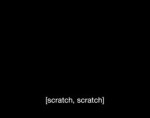
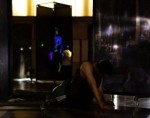

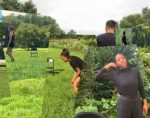
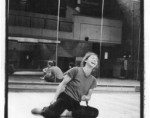
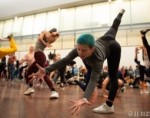
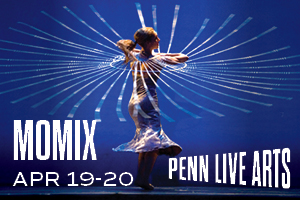
.png)


